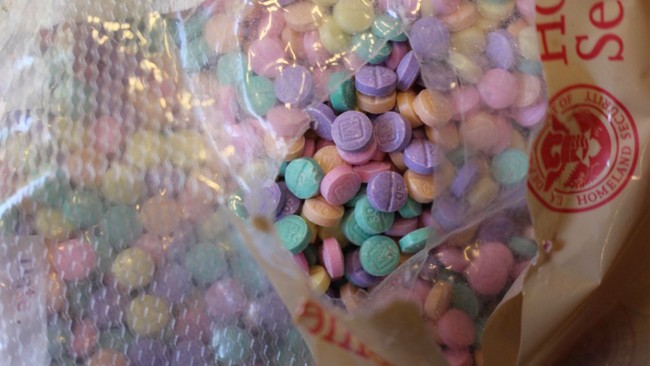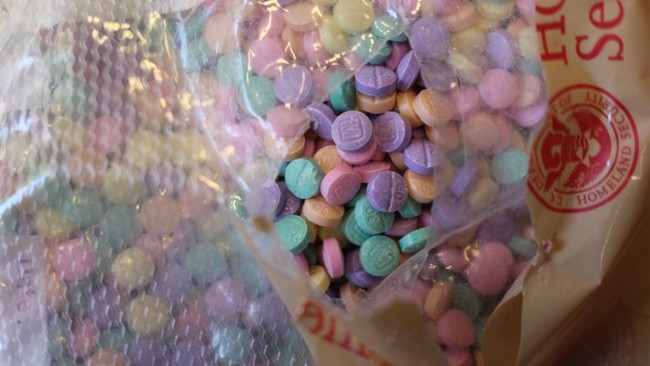
Plot Spoiler: They’re Already Here
On a Missouri February night, 21-year-old college student Blake Barklage was found unresponsive by his mother. She had Narcan on hand and used it immediately.
Then again.
And again.
Seven doses later, Blaek still wasn’t breathing. Later, toxicology revealed a synthetic opioid was in his system that’s up to 43 times stronger than fentanyl: Nitazene. Xanax, he thought; instead, he swallowed a drug that Narcan couldn’t beat.
Nitazene isn’t a distant threat that our brains imagine, on an island far away. It’s here now, moving through our streets in counterfeit pills, heroin, benzodiazepines, and even cannabis products; more often than not, they didn’t know. Some variants are 4,300 times more potent than morphine, and danger grows daily.
A Potent Drug Resurfaces
There’s nothing new about nitazene; it’s not a new chemical discovery.
Developed first in the 1950s, scientists at the Ciba AG in Switzerland were catching part of a larger wave of synthetic opioid research. Their research produced medical breakthroughs, yet many substances were far too dangerous for clinical use. The most potent substance, etonitazene, was found, quite quickly, to have a lethal margin of error: A slight miscalculation in dosing led to respiratory failure.
Although there were examples where research discovered legitimate medical applications, such as early fentanyl derivatives and morphine, nitazenes were abandoned for human use.
For decades, nitazenes remained largely absent from public awareness and clinical use. In fact, their existence depended solely on pharmacological research and occasional toxicology reports. According to the Organization of American States, before 2019, nitazenes were primarily known only to researchers studying opioid pharmacology. They were only reintroduced to the broader illicit drug market in the late 2010s, when clandestine labs began resurrecting them as fentanyl alternatives.
Fentanyl’s “reintroduction” matched a similar pattern; it was first synthesized in 1959 by Dr. Paul Janssen, while used as a powerful hospital analgesic. Then it found itself hijacked by illicit markets.
What the public didn’t know was the potency of nitazenes.
Already Here, Already Killing
In the past five and a half years, over 4,300 nitazene-related seizures have been recorded by U.S. law enforcement. Public health experts estimate between 1,000 and 2,000 deaths in that period may have already been linked to those compounds. In 18 months, nitazenes have been tied to over 400 deaths in the United Kingdom.
Two young Texan men, ages 21 and 22, recently died after taking what they thought were legitimate prescribed pills. Unfortunately, toxicology reports confirmed they had ingested nitazene. In one of those cases, repeated Narcan doses failed.
The Drug Enforcement Administration has linked nitazenes to international criminal networks, including shipments sourced from chemical suppliers in China and pressed into pills in Mexico before crossing the U.S. border.
A Stealth Threat
Like other stealth drugs, a reason nitazens are so deadly is that they’re rarely sold under their name; they’re mixed into other drugs in ways their buyers aren’t aware of. Think of replacing sugar in their coffee with a lethal dose of cyanide: There’s no visual clue or warning.
A needle exchange in Australia found nitazenes in five percent of returned syringes. Nearly everybody was unaware of the exposure.
Toxicology labs in the U.S. have been detecting nitazenes in cases thought to be fentanyl overdoses.
What does this mean?
There’s no way to measure the real human impact.
When the Usual Tools Fail
Naloxone, better known as Narcan, has been the gold standard for decades for reversing opioid overdoses. Narcan works by binding to opioid receptors in the brain, which then displaces the drug that’s shutting down breathing.
With nitazenes, however, their sheer potency means multiple doses are required before the victim starts breathing—if at all.
Philadelphia’s Department of Public Health warned that nitazene overdoses often need many Narcan doses followed by emergency medical treatment because the drug reasserts itself after revival.
The CDC has confirmed that Narcan remains effective, but following Philadelphia’s strategy is crucial.
Harm Reduction in Action
Fortunately, communities are adjusting. A single Narcan vending machine at a gas station in Nashville, Tenn., dispensed over 2,000 doses in five weeks. Besides acting as a remarkable statistic, it means hundreds of lives have been saved.
Australia’s first prosecution for nitazene-laced vape cartridges triggered a nationwide alert campaign. Drug-checking programs in the U.S. at music festivals, colleges, and community centers started looking for nitazenes in their screening protocols.
The DEA moved to temporarily classify several nitazene variants as Schedule I controlled substances. However, like fentanyl analogs, talented chemists defeat programs when they create new, slight variants, which are technically legal, at rates much faster than any legislation can.
The Bigger Picture
Like clothing styles, our drug crises move in waves: the 1970s had cocaine, the 1980s changed to crack cocaine, the 1990s witnessed prescription opioids, and fentanyl rounds things out in the 2010s.
Public awareness rides each wave, along with new law enforcement tactics. Tragically, body counts trail each wave, too.
Nitazenes might be the next wave: a lab-born danger more potent than anything before it, showing up before the fentanyl crisis has even slowed.
The National Drug Threat Assessment warns us that, like fentanyl, nitazenes often get mixed up with non-opioid drugs, creating users with no tolerance for opioids, which dramatically increases fatality risks.
Final Thoughts
This sounds like an action-adventure movie on Netflix, doesn’t it?
ANNOUNCER VOICE-OVER: “Stronger than fentanyl and appearing out of nowhere, catching America off guard …”
Nitazens are in circulation and are stronger than fentanyl; they appear in drugs when least expected; their resistance to our standard overdose treatment makes them uniquely dangerous, something the Barklages learned in the most painful way possible. Imagine the looks of incredulity on Blake’s family when watching seven doses of Narcan doing nothing.
For the rest of us, we discover that risk before we even swallow the first pill.
If you’re reading this, you already know the stakes. Stories like Blake Barklage’s don’t make the nightly news because they’re inconvenient to the narrative. But they matter: to families, to communities, and the fight for truth. At PJ Media, we dig into stories the legacy press ignores or buries. We connect the dots between policy failure, law enforcement realities, and the human cost, so you get the whole picture, not the approved version.
Independent journalism isn’t just about telling the truth. It’s about telling the truth before it disappears. Join us at PJ Media VIP and help us keep doing the kind of reporting that cuts through spin and gets straight to what’s real.









